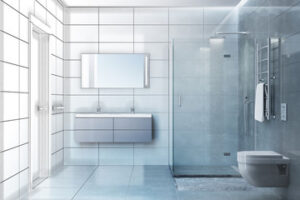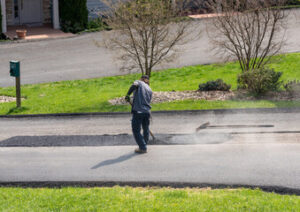Glass Shower Doors Atlanta are a beautiful and stylish alternative to the standard shower curtain. They are easy to keep clean and add to your home’s value.

Glass shower doors come in a variety of styles, sizes, and finishes. You can even customize the hardware finish on your handle, anchor bracket and hinges (if applicable). Tinted glass options such as gray or bronze obscure visibility and create privacy while still allowing light to pass through.
Glass shower doors are easy to keep clean, which makes them a more convenient option than other types of bathroom fixtures. You can wipe down your shower doors after each use with a non-abrasive sponge or a squeegee to remove soap scum and hard water deposits from the glass. You can also apply a shower-glass protectant to prevent buildups from forming.
If your glass doors are especially dirty, try using a wet laundry dryer sheet to cut through grease and soap scum. Just rub the sheet over your glass, rinse and then wipe it down. You can also spray a mixture of equal parts distilled vinegar and water in a spray bottle to clean your shower. This solution works well on most surfaces, but be careful when using it around natural stone materials.
Another great way to clean your shower is with a Magic Eraser, which easily removes dirt and grime from almost any surface. Just dampen the eraser with water, and then work it over your shower. If you’re dealing with a stubborn stain, try a commercial cleaning product such as CLR Calcium, Lime & Rust Remover, which dissolves mineral deposits and stains without damaging your shower doors or grout.
To make future cleaning even easier, add a non-stick surface treatment to your glass shower doors. A treatment like Diamon-Fusion creates a smooth, transparent coating on the glass that makes it resistant to soap scum, hard water stains and mold. It’s also less prone to scratching than untreated glass. Keep a squeegee in your shower to make it simple for family members to dry the glass after each use and avoid the need for extra cleaning.
Increases Home Value
As homeowners juggle home improvement projects, they must weigh costs against returns. Often, simple upgrades like glass shower doors can make a significant difference in how buyers perceive the property. While these fixtures may seem costly, their modern aesthetic and perceived sense of luxury appeal can easily outweigh their initial installation costs.
Compared to shower curtains that quickly wear out and collect mildew, or frosted doors that block natural light, glass shower doors prioritize openness and brightness. They also reduce the need for artificial lighting during the day, leading to energy savings. As such, this simple feature elevates bathroom aesthetics and contributes to a more sustainable living space.
In addition, glass shower doors can be customized to suit any style. They come in a variety of shapes, sizes, and finishes to create a unique design that perfectly matches any bathroom layout. As a result, they’re an affordable way to transform a home into an elegant oasis.
When it comes to showcasing homes online, glass shower doors are a striking element that will capture the attention of potential buyers. They instantly evoke the sense of a spa-like sanctuary and promise minimal future maintenance, making them a standout feature in virtual tours and photographs.
As the real estate landscape continues to change, it’s important for home improvement professionals to stay aware of trends that affect property values. While it can be difficult to quantify the precise increase in value brought by this small upgrade, it’s clear that these fixtures are becoming a must-have for modern bathrooms and a key consideration for prospective buyers.
Increases Bathroom Space
When your bathroom is surrounded by glass, it looks larger and brighter. This is because shower doors allow light to pass unobstructed, whereas curtains block it. This makes mornings brighter and more energizing, and evening showers feel relaxing.
If you choose a frameless glass design, the lack of thick framework also helps your bathroom appear larger and more open. If privacy is a concern, there are frosted and patterned glass options to strike the perfect balance between openness and seclusion. Additionally, treatments like anti-stain and fog-resistant glass further add to your bathroom’s appeal.
Glass shower doors look beautiful and are easy to maintain. You can wipe them down with a microfiber cloth or sponge on a regular basis to remove buildup. For stubborn stains, you can use store-bought or homemade cleaning solutions. However, it’s important to note that your shower needs to be completely dry before you apply any cleaners.
Shower and tub stains aren’t just unsightly, but they can cause health problems for you and your family. Mold and soap scum can lead to respiratory issues, and you might even develop skin allergies or rashes. Glass Shower Doors prevent this buildup by keeping water and soap scum from splashing outside of the shower or tub.
Glass Shower Doors are a great way to update your bathroom’s appearance and increase its value. By adding a modern, upscale flair and making your bathroom appear larger and more spacious, these doors are sure to impress potential buyers and make your home more attractive in the real estate market. If you are ready to remodel your bathroom and install Glass Shower Doors, Sweeten can match you with trusted general contractors for a stress-free renovation experience.
Increases Safety
Glass shower doors are designed with safety in mind, and they can enhance the safety of your home. This is particularly important if you have young children or elderly people living in your household. A minor slip in the shower can lead to serious injuries and preventable trips to the emergency room. A glass shower door with tempered glass and professional installation can prevent these accidents from occurring.
Precise measurements are needed to ensure a proper fit and to avoid leaking. If you are performing a complete shower or tub remodel, it is a good idea to wait until the tile or surround installation is finished before measuring for new glass shower doors. It is also recommended that two capable adults participate in the installation to prevent injury from falling or dropping heavy objects on yourself.
Most glass shower doors are made of tempered glass, which is much safer than regular glass. Tempered glass is reinforced with a layer of cellulose nitrate, which helps to reduce the risk of injuries caused by shattering. This is the same type of safety glass that is used in automobile windows, computer monitors, and kitchen appliances.
Another safety precaution that is often used in glass shower doors is a recessed handle. This prevents individuals from accidentally slamming the door, which can lead to shattered glass and serious injuries. It is important to teach your family and guests to gently close the doors and not slam them.
Glass shower doors are also available with a variety of protective coatings that can add a beautiful sheen to the glass and help reduce soap scum buildup. Some of these coatings are also designed to make the glass easier to clean, which can save you time and money in the long run.
Increases Value of Home
Glass shower doors add a touch of luxury to your bathroom, and the benefits they bring in terms of design, hygiene, and space enhancement are incredibly appealing to potential buyers. As a result, this bathroom upgrade can easily increase the value of your home.
Aesthetic Appeal and Modern Design
One of the most obvious advantages of Glass Shower Doors is their undeniable aesthetic appeal. They are a hallmark of contemporary style and provide a sleek, refined look that is desirable among modern homebuyers. Additionally, their transparent nature allows natural light to flow into the shower, boosting the lighting and giving the space a more open feel.
Hygiene is another key advantage of Glass Shower Doors, as they help to prevent the growth of mold and other dangerous germs. Unlike shower curtains, which are notorious for their ability to attract mold and other bacterial growth, Glass Shower Doors are easy to keep clean and are virtually immune to such issues. In fact, the only thing required to maintain a sanitary environment is regular cleaning with a non-abrasive cleaner and occasional re-application of protective coatings.
Glass Shower Doors also make the bathroom a safe place for children and elderly family members, as they prevent accidental falls or injuries. This is due to their sturdy construction, which often includes tempered glass that shatters into small pebble-shaped fragments, rather than sharp pieces. This safety feature can be an especially important consideration for families with young children or elderly family members.
Finally, Glass Shower Doors are highly customizable, allowing homeowners to tailor the look and feel of their bathrooms to match the rest of their homes’ decor. The wide range of options available, from frameless to frosted and tinted glass, gives homeowners the flexibility to create a unique and personal space that will set their home apart from others on the market.




